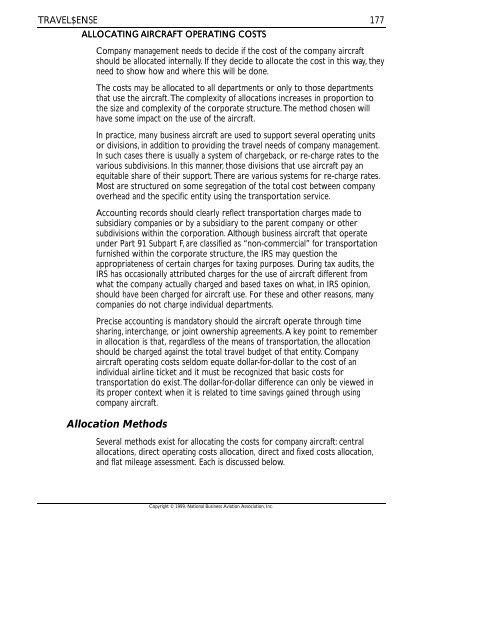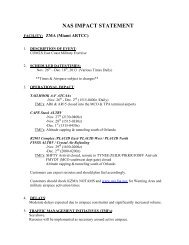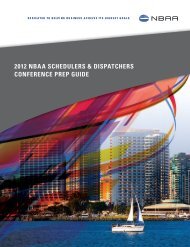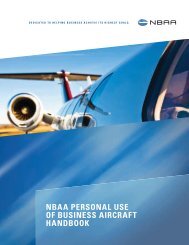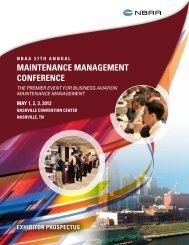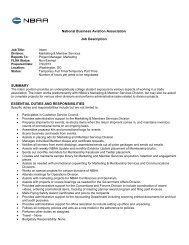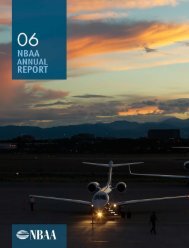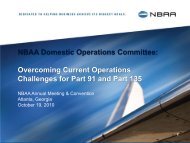Travel$ense User's Guide (PDF, 139 MB) - NBAA
Travel$ense User's Guide (PDF, 139 MB) - NBAA
Travel$ense User's Guide (PDF, 139 MB) - NBAA
- No tags were found...
Create successful ePaper yourself
Turn your PDF publications into a flip-book with our unique Google optimized e-Paper software.
TRAVEL$ENSEALLOCATING AIRCRAFT OPERATING COSTS177Company management needs to decide if the cost of the company aircraftshould be allocated internally. If they decide to allocate the cost in this way, theyneed to show how and where this will be done.The costs may be allocated to all departments or only to those departmentsthat use the aircraft. The complexity of allocations increases in proportion tothe size and complexity of the corporate structure. The method chosen willhave some impact on the use of the aircraft.In practice, many business aircraft are used to support several operating unitsor divisions, in addition to providing the travel needs of company management.In such cases there is usually a system of chargeback, or re-charge rates to thevarious subdivisions. In this manner, those divisions that use aircraft pay anequitable share of their support. There are various systems for re-charge rates.Most are structured on some segregation of the total cost between companyoverhead and the specific entity using the transportation service.Accounting records should clearly reflect transportation charges made tosubsidiary companies or by a subsidiary to the parent company or othersubdivisions within the corporation. Although business aircraft that operateunder Part 91 Subpart F, are classified as “non-commercial” for transportationfurnished within the corporate structure, the IRS may question theappropriateness of certain charges for taxing purposes. During tax audits, theIRS has occasionally attributed charges for the use of aircraft different fromwhat the company actually charged and based taxes on what, in IRS opinion,should have been charged for aircraft use. For these and other reasons, manycompanies do not charge individual departments.Precise accounting is mandatory should the aircraft operate through timesharing, interchange, or joint ownership agreements. A key point to rememberin allocation is that, regardless of the means of transportation, the allocationshould be charged against the total travel budget of that entity. Companyaircraft operating costs seldom equate dollar-for-dollar to the cost of anindividual airline ticket and it must be recognized that basic costs fortransportation do exist. The dollar-for-dollar difference can only be viewed inits proper context when it is related to time savings gained through usingcompany aircraft.Allocation MethodsSeveral methods exist for allocating the costs for company aircraft: centralallocations, direct operating costs allocation, direct and fixed costs allocation,and flat mileage assessment. Each is discussed below.Copyright © 1999, National Business Aviation Association, Inc.


